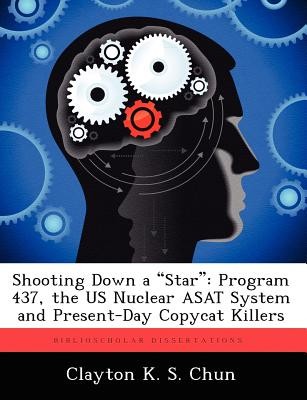
- We will send in 10–14 business days.
- Author: Clayton K S Chun
- Publisher: BiblioScholar
- ISBN-10: 1249327202
- ISBN-13: 9781249327202
- Format: 18.9 x 24.6 x 0.5 cm, softcover
- Language: English
- SAVE -10% with code: EXTRA
Reviews
Description
Colonel Chun undertakes a case study of an experimental US antisatellite defense fielded by the Air Force in the 1960s as a departure for assessing the need for an ASAT system today. The author argues that the US Air Force was able to develop a relatively effective system based on rudimentary technology. Using aging booster rockets (the Thor ICBM) and existing tracking and targeting radar systems, the Air Force was able to intercept satellites. Colonel Chun argues that extrapolating from this historical example several states, particularly North Korea, Iran, India, and the Peoples Republic of China, could use widely available improved missiles and radar systems to develop ASAT weapons that would make critical US and allied space systems (military and commercial) vulnerable to attack, thus seriously undermining our offensive and defensive capabilities and perhaps wreak havoc on our economic system.
EXTRA 10 % discount with code: EXTRA
The promotion ends in 18d.00:30:42
The discount code is valid when purchasing from 10 €. Discounts do not stack.
- Author: Clayton K S Chun
- Publisher: BiblioScholar
- ISBN-10: 1249327202
- ISBN-13: 9781249327202
- Format: 18.9 x 24.6 x 0.5 cm, softcover
- Language: English English
Colonel Chun undertakes a case study of an experimental US antisatellite defense fielded by the Air Force in the 1960s as a departure for assessing the need for an ASAT system today. The author argues that the US Air Force was able to develop a relatively effective system based on rudimentary technology. Using aging booster rockets (the Thor ICBM) and existing tracking and targeting radar systems, the Air Force was able to intercept satellites. Colonel Chun argues that extrapolating from this historical example several states, particularly North Korea, Iran, India, and the Peoples Republic of China, could use widely available improved missiles and radar systems to develop ASAT weapons that would make critical US and allied space systems (military and commercial) vulnerable to attack, thus seriously undermining our offensive and defensive capabilities and perhaps wreak havoc on our economic system.


Reviews